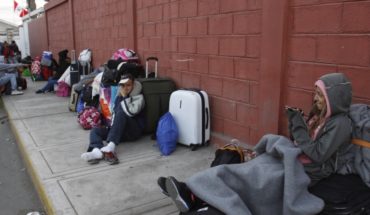Is it an initiative that seeks to adapt to new realities or is it a fast track of budget adjustments, widening inequalities and possible negative impacts on the psychological well-being of students? The recent change of government in Argentina, led by President Javier Milei, brought with it various debates and proposals for reforms. In the third week of his term, presidential spokesman Manuel Adorni announced that he would send to Congress a set of laws under the title “Law of Bases and Starting Points for the Freedom of Argentines.” Among the most controversial proposals, the possibility of enabling hybrid distance education for students from fourth grade onwards stands out. Hybrid distance learning as an alternative to face-to-face education from the second cycle of the primary level for minors, young people and adults, may be taught in the different educational modalities,” details the proposal aimed at replacing article 109 of the National Education Law, which until now restricted distance education to those over 18 years of age. However, the formulation raises questions and demands concrete answers: What exactly does the hybrid modality entail? Does it represent an effective alternative to face-to-face education? Will it have the ability to meet the established educational standards?” We are at the gateway to what can be an educational tragedy,” warns Guillermina Rizzo, PhD in Psychology (MN 79901). According to the specialist, the implementation of the “Homeschooling” from the age of 9 could exacerbate the learning disparities already existing in Argentina. ” How many children have the resources to afford a teacher trained in all the disciplines necessary for their learning?” he asks and continues: “This model is only available to those who can afford it, those who can cover the cost of a teacher and have the necessary virtual devices, as well as an adequate internet connection.” Those in urban areas or from families with greater resources would have considerable advantages over their peers in rural or low-income areas, who could face difficulties in accessing necessary digital resources,” says Laura Lewin, trainer, author and consultant on educational management issues. In the same vein, it deepens the debate by pointing out that, in addition, “this practice requires a higher level of support and supervision from parents or guardians, which may not be feasible for all families, especially those where parents work full-time or are unable to assist in the learning process.” A scenario that could translate into an unequal educational experience, “where some students receive a more complete education and others are left behind due to limitations in their environment.” The imminent passage of the Omnibus Law could also represent a blow to the emotional and psychological well-being of children. Educational institutions, beyond being spaces where a variety of knowledge is acquired, are essential environments for forging human connections. Rizzo argues that conceiving of homeschooling for nine- or fifteen-year-olds “runs counter to the purpose of school,” which is to facilitate instances to “develop desires and capacities within specific conditions of time and space.” In his perspective, “it involves the construction, distribution and appropriation of cultural knowledge, legacies and legacies.” “Education is and will always be a political act. It’s a right and it’s a bridge to other destinations,” he says. Homeschooling also poses a dilemma for parents of children with special educational needs. While looking for options that offer personalized learning, it’s crucial to consider the emotional aspects. The question remains: can hybrid education offer an appropriate balance between individualized education and the necessary social interactions? “While it offers opportunities for digital skills development, self-management and more personalized learning, which is especially beneficial for those with disabilities, it also comes with certain challenges. Not having daily face-to-face contact with peers can limit the development of key social skills,” distinguishes Lewin.La socialization, a key process in the formation of individuals, begins at birth, with the family being the main socializing agent by providing affective care and support. This stage evolves into secondary socialization upon entering educational institutions, where they are able to learn about their education.They solidify norms, roles, and values. “The notion that education can be carried out exclusively in front of a screen, within a home with a private teacher, implies obstructing the crucial process of socialization,” the psychologist points out. “We had a small sample of this during the pandemic, and the impact it had on kids not being able to interact with others,” she says. So why, from a psychological perspective, do these measures cause concern? “Because we observe the magnitude of problems such as anxiety disorders, panic attacks, fear and anguish, derived from uncertainty and technological saturation. We also notice phenomena such as Hikikomori, a psychopathological and sociological aspect where people tend to isolate themselves socially, locking themselves in their rooms,” Rizzo details. This ever-increasing picture is reflected in the number of adolescents experiencing difficulties such as “insomnia, gambling problems and technology addiction.” Towards a hybrid educationHowever, there are those who believe that this measure is not so wrong. Guillermina Tiramonti, a researcher in the area of education at the Latin American Faculty of Social Sciences, says: “In our current environment, characterized by a hybrid reality where we build our lives through the integration of face-to-face and virtual, it is natural that this dynamic extends to the educational field.” However, it recognises “the importance of face-to-face interactions” for the development of children and young people. Therefore, instead of advocating for a complete replacement, the specialist advocates for “a hybridization, a combination that is already being successfully implemented in many private schools.” The key is to find a balance that enhances the best of both modalities, “without completely displacing one in favor of the other.” The expert agrees with the specialists when she points out that replacing face-to-face education with virtual education “could have adverse repercussions both emotionally and in educational equity.” However, he stresses that the problem does not lie in virtuality itself, but in the existence of students who “lack knowledge in the virtual sphere” due to their economic situation, while students in private schools have access to various enriching platforms. He explains that the solution does not involve “opting for one or the other”, but ensuring that both are available to all students. “If, in the long term, Argentine schools could combine face-to-face education with the contributions of virtuality, I am sure that the impact would be positive,” says Tiramonti.Although the regulations and proposals continue to be ambiguous, it is undeniable that Argentine education faces an extensive path of necessary transformations. It is necessary to recognize that the reform process cannot be based solely on the implementation of new regulations, but must address deeper aspects, such as teacher training, curriculum updating and school infrastructure. “The policy has to be systemic, which means that you have to intervene in different aspects at the same time,” explains Tiramonti. “We must comply with the Education Law in all its articles, provide teacher training, develop an initial education that prepares children for literacy in the first grade, achieve transparency in the use of budgets, demand greater commitment to education from the provinces that have the worst results, and renew secondary education not only to achieve greater retention, but also to achieve greater retention. but for its graduates to acquire the instruments of contemporary culture,” he concludes.
Homeschooling: a setback in the Argentinian education system?
January 18, 2024 |





